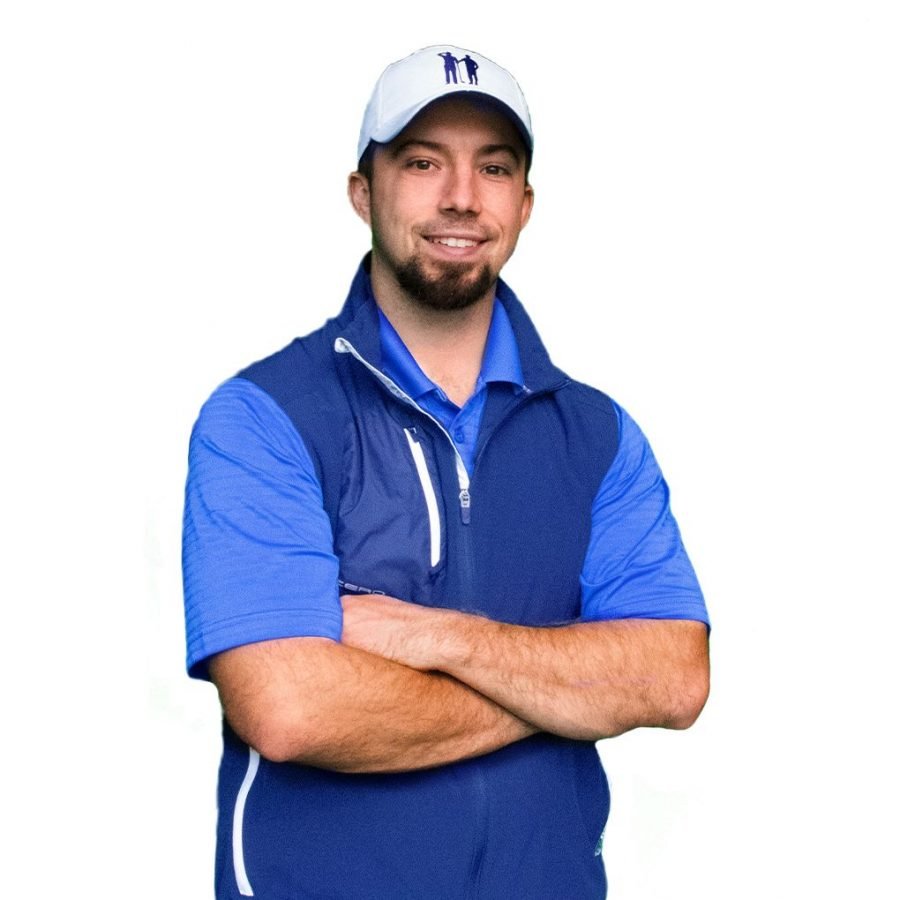Driver Attack Angle for Maximum Carry Distance
If you play golf, you must’ve heard of different angles such as the launch angle, loft angle, attack angle, wrist angle, club head angle, and whatnot! All of these angles have their own purpose in a game of golf.
Our focus today is the attack angle. To be more specific, the driver attack angle. Drivers are used for one and one reason only. Maximum carry. You need to cover as much distance as possible from the tee box to relieve pressure off of your short game.
Unfortunately, there are players who can’t seem to get the desired distance even with the most expensive driver on the market. The truth of the matter is, golf is a game of skills as much as it is of fancy equipment.
In this post, we’re going to look at what driver attack angle is and how you can get the proper angle to achieve maximum carry with whatever driver you have.
Resource: Step by Step Golf Practice Routines + Training System
What is Driver Attack Angle?
When the club head is compressed to the maximum, the upward or downward movement of the club head relative to the horizon is the attack angle. Compression refers to the deformation of the ball’s surface when the club face hits it. The club face interacts with the core of the ball to propel it forward.
For optimum ball trajectory, you need to have a negative attack angle at impact. It’s true for drivers and irons equally.
According to data released by Trackman Golf, PGA tour pros have about 1 degree of negative angle on their drivers while amateur players have 0.9 degrees in the negative. It might look minimal to the naked eye but when you swing the club at 150 MPH, the 0.01 degree becomes a lot.
Many players get confused between launch angle and attack angle. Launch angle is the initial trajectory of the ball in relation to the ground. It’s closely intertwined with the loft angle on your club. We have a complete guide on how launch angle can impact your playing on our website.
Reasons Behind Incorrect Attack Angle & How to Fix Them
According to PGA instructors, there are three main reasons why you might not be getting the maximum carry from your driver. In this section, we’re going to expand on the three reasons and see how you can overcome them.
The Upper Body
For the majority of the players who struggle from driver carry issues, the main culprit is their upper body and its positioning. The instinct for most players is to face the ball with their bodies. If you square up your shoulders with the ball at address, you’re guilty of this error.
Basically what happens is when the shots are played from a forward stance, the upper body automatically turns to face the ball. It results in a steep attack angle. The swing also comes down somewhat over the top at impact. It’s a very bad combination if your primary goal is to get as much distance as possible.
To overcome this, you need to close your shoulders. The same theory as the club face angle applies here. To close your shoulders, your chest should look to the right of the ball at address. It’s not a natural stance so it might feel awkward for you in the beginning.
Also, this is not for every player out there. If you’re already getting the desired distance, there’s no point in ruining it. Only if you suspect that you’re falling short with your driver, you should try this stance at address.
It’ll shallow your angle of attack and bring the swing from inside to outside. It’s what you want to get the maximum distance from your drive.

The Forward Lean
The ideal shaft angle at address is always when the club head lies flat on the ground. It’s more of a neutral position for the club to rest on the ground. Some of us are taught to have a slight forward lean on our shaft at address.
Forward lean refers to the shaft being leaned toward the target. If you didn’t know already, the side of the target is the forward or the lead side. And the area on your right is the backward or the trail side.
When you have the shaft leaned forward, it creates a more downward angle at impact. You’ll be basically hitting down on the ball. It’s a very good practice from iron shots and onward. But it’s a swing flaw for drivers, woods, and hybrids.
On such long shots, you need to hit up on the ball. It can only be achieved by neutralizing the lean angle at address. This should be an easier implementation, right? All you have to do is not let the shaft lean toward the target.
To practice it, let the club head rest naturally on the ground. Hold it as lightly as you can with one hand and see how the club behaves. If it wants to lean toward any side, it means your driver doesn’t have a flat sole. Then again, no drivers do.
You need to get yourself acquainted with the feeling of having a neutral shaft lean. The best way to do it? Repetition!
Resource: How to Score in the 70’s Golf Training Plan
Same Hips and Shoulder Speed
In one of our previous guides, we’ve explained why it’s important for your hips and shoulders to move at different speeds. Ideally, the upper body and the shoulders should rotate faster and cover more distance than the hips.
If you have the same speed on both parts of your body, you’re basically hanging back through impact. It causes you to lift your club head without even realizing it. As a result, you change the attack angle and increase the angle.
Needless to say, you can’t move your hips as fast as your shoulders even if you wanted to. The lower part of your body is planted to the ground to generate power and transfer it to the upper body. Namely, the shoulders, and the arms. It’s a huge speed killer because you’re dragging the lower body along with the upper body.
So, what you need to do is create a speed difference between your hips and shoulders. Reduce the rotation on your lower body and increase the rotation of the upper body. You can start by delaying the shoulder movement by a notch.
If you play the cards right, it should feel like your hips are open to the target while your shoulders should feel closed. It’s a weird sensation if you’re not used to it. If you manage to master this move, you’re pretty much there to get the maximum carry from your driver. Because in this process, you’re shallowing your attack angle which is crucial for distance.
Drills to Improve the Attack Angle
We’ve said this countless times in our previous posts that there’s no better way to improve your game than to practice drills. In this section, let’s shed light on a few golf drills to perfect your attack angle.
The Head Cover Drill
The head cover from your driver has come in handy for plenty of drills in the past, hasn’t it? You’re going to use it one more time. However, you’re free to use anything else that remains below the height of your ball on a tee. A sleeve of golf balls works as well.
Basically, you’ll be putting the head cover or the sleeve about 8 to 9 inches in front of the ball. You’ll also want to tee the ball a little higher than you’re used to. The purpose of the obstacle is to encourage you to hit upward on the ball.
- Get into address position and take the stance as we’ve discussed in this guide.
- Place the obstacle 8-9 inches in front of the ball.
- Really exaggerate the feeling of hitting upward in the beginning because it’ll take some getting used to.
- When you’re confident, hit the ball. You should see the difference in the distance right away!
The Marker Drills
For this drill, you’ll combine what you’ve learned today and implement it into a competitive setting. What we mean is that you need to devise a practice plan to incorporate everything here one by one and see how you’re improving. Remember, tracking your stats is one of the best things you can do for your game.
- Divide your practice session into sets of shots. For example, it can be 10 shots.
- You’ll hit 10 shots in your normal stance and 10 more shots with your upper body in the closed position. Notice the difference.
- Repeat the process with the other two fixes we’ve discussed today.
Final Words
It’s heartbreaking to watch players invest their hard-earned money into the best drivers on the market only to discover that they can’t hit 300-yard shots. In the majority of the cases, the driver is not at fault. The attack angle of the players is.
That’s what prompted us to create this guide. You can expect to get the best results when you address the right issue.
Golf Practice Plan – What to Do & Not To Do
Wonder why you’re not getting better as fast as you want to be? Here’s your proven system to follow step by step that hundreds of golfers like you are following each month. Our students send us emails frequently praising these practice plans and how much they’ve improved at golf.
Get access to our Break 90, Break 80, Break 70 plan built for all 3 skill levels (Beginners, Intermediate, and Advanced Golfers).
You’ll learn what to do at the golf course to improve your score and skills and what not to do. Just follow these plans step by step. It’s made easy for you.
Thanks for reading today’s article!
Nick Foy – Golf Instructor

